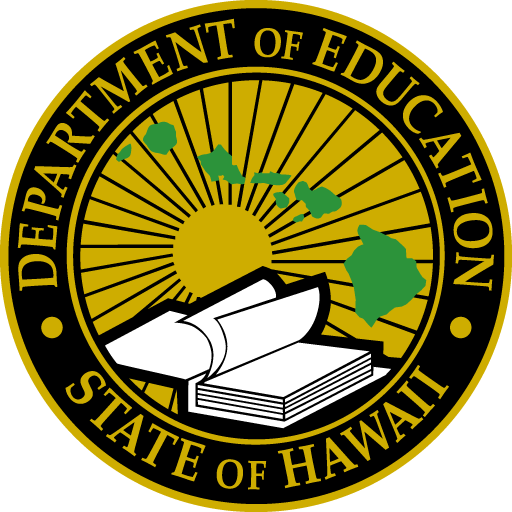Health education supports students’ health, resilience, total well-being and academic success so they may reach their aspirations, from early learning through college, career and citizenship.
Providing students with a high-quality, comprehensive health education equips and empowers them with the skills, knowledge and attitudes to address their current and future health needs and challenges. Health literacy is essential to students’ social, emotional, mental, physical, and cognitive development.
Health literate individuals are able to find, understand and use information and services to inform health-related decisions and actions for themselves and others. This contributes to resilience, well-being, healthy relationships and a positive quality of life as well as prevents and reduces the risk of disease, injury and death.
오늘날의 건강교육 다음을 강조하는 증가하는 연구 본문을 반영합니다.
- 어린이 전체의 건강, 회복력 및 전반적인 웰빙을 지원합니다(예: 학생의 사회적, 정서적, 정신적, 신체적, 인지적 발달).
- 국가 건강 교육 표준에 맞춰 건강 정보 이해 능력을 개발합니다.
- 우선순위 위험 주제에 맞춰 관련성 있고 기능적인 정보를 바탕으로 기능적 지식을 구축합니다.
- 가족 및 지역 사회와의 연결을 강화합니다.
- 상호작용적이고 사회적인 학습 경험을 통해 학생들의 필요와 관심사항을 충족합니다.
- 안전하고 포용적이며 배려하는 메시지와 학습 환경을 통해 긍정적인 건강 행동을 뒷받침하는 태도, 가치, 신념을 육성합니다.
그만큼 National Health Education Standards: Achieving Excellence (NHES) are fused on developing students’ health literacy skills to proficiency within and across grade levels:
- 표준 1: 개념 이해 – Students will comprehend concepts related to health promotion and disease prevention to enhance health.
- 표준 2: 영향 분석 – Students will analyze the influence of family, peers, culture, media, technology and other factors on health behavior.
- 표준 3: 정보, 제품 및 서비스 액세스 – Students will demonstrate the ability to access valid information, products and services.
- 표준 4: 대인 커뮤니케이션 – Students will demonstrate the ability to use interpersonal communication skills to enhance health and avoid or reduce health risks.
- 표준 5: 의사 결정 – Students will demonstrate the ability to use decision-making skills to enhance health.
- 표준 6: 목표 설정 – Students will demonstrate the ability to use goal-setting skills to enhance health.
- 표준 7: 자기 관리 – Students will demonstrate the ability to practice health-enhancing behaviors and avoid or reduce health risks.
- 표준 8: 옹호 – Students will demonstrate the ability to advocate for personal, family and community health.
While the primary focus of Health Education is the development of health skills, these skills must be addressed in conjunction with functional information in the context of priority risk topics. Standards-based health education must be age and developmentally appropriate, medically accurate and provide factual information in all priority risk topics:
- Mental and Emotional Health.
- Healthy Eating and Physical Activity.
- Personal Health and Wellness.
- Safety (Unintentional Injury Prevention).
- Violence Prevention.
- Tobacco Use Prevention.
- Alcohol and Other Drug Use Prevention.
- Sexual Health and Responsibility.
Note: Health Education in prekindergarten is aligned to the Hawai‘i Early Learning and Development Standards (HELDS).
Course Requirements for Health Education
모든 초등학교에서 건강교육을 의무화합니다.
Middle/intermediate schools must offer courses that allow all students to meet Hawaiʻi՚s Health Education standards and performance indicators for Grades 6-8. One semester (0.5 credits; 60 hours) of Health Education in each middle/intermediate school grade is strongly recommended but not required.
In high school, a one-semester course (0.5 credits; 60 hours) in Health Education is required for graduation.
A variety of Health specialized elective courses (e.g., Peer Education) are available at the secondary school level.
중학교 진급 및 고등학교 졸업 요건은 다음을 참조하세요. Board Policy 105-1 Academic Program, Board Policy 102-9 Middle Level Education Promotion Policy, 그리고 Board Policy 102-15 High School Graduation Requirements and Commencement.
Wellness Guidelines for Health Education and Nutrition Promotion
Health education and nutrition promotion provide the instructional foundation that is necessary to prepare students to make lifelong healthy decisions and practice healthy behaviors. This component area of the Wellness Guidelines includes school-wide promotion of nutritious meals and snacks as well as quality health education. Click for more information about our 웰빙 가이드라인.
Guidelines for health education and nutrition promotion are organized around four key components:
- 건강 교육 수업의 교육 내용은 건강한 식습관을 뒷받침하는 지식과 기술에 중점을 두고 있으며, 건강 교육을 위한 HIDOE 표준에 맞춰 구성되었습니다.
- 초등학교 학생들에게는 주당 최소 45분, 중학교 학생들에게는 주당 최소 200분 동안 건강 교육을 제공합니다.
- Nutrition education includes culturally relevant activities that are ‘āina-based and hands-on, such as food preparation, taste-testing, farm visits and school gardens.
- 모든 학교 기반 식품 및 음료 마케팅은 다음 사항을 충족해야 합니다. 영양 지침. 여기에는 학교 출판물, 자동판매기 외관, 포스터, 현수막, 학교 내 텔레비전 및 점수판이 포함되지만 이에 국한되지는 않습니다.
학교가 좋은 영양을 증진하는 방법
- 캠퍼스에는 영양가 있는 음식에 대한 긍정적인 메시지가 게시되어 있습니다.
- 학생용 자판기에는 물만 비치되어 있습니다.
- 학교 급식은 가능한 한 직접 만들고, 갓 구운 통밀 빵도 포함됩니다.
- 어떤 음식에도 트랜스지방이 들어있지 않습니다.
- 식사시간에는 학생들에게 무료로 식수가 제공됩니다.
- 학생들은 건강한 음식을 만드는 방법을 배우기 위해 식당 주방을 방문하도록 초대됩니다.
- 학생과 가족들에게 건강한 아침, 점심, 간식을 홍보합니다.
- 교육용 정원은 식량을 재배하는 방법을 보여줍니다.
Want To Learn More About Health Education?
Additional information may be found in the following resources:
- National Health Education Standards in Hawai‘i
- 건강을 위한 학습 설계
- Why Health Education Matters
- Health Education Standards and Topics Overview
- Healthy Behavior Outcomes
- Reviewing Instructional Materials for Health Education
연락처 정보
건강교육 프로그램
Phone: (808) 784-6423
이메일: [email protected]
자원
- National Health Education Standards in Hawai’i
- Reviewing Instructional Materials for Health Education
- 웰빙 가이드라인
- 2022 Hawaiʻi School Health Profiles – Highlights Report
- HIDOE 웰니스 가이드라인
- HIDOE Sexual Health Education
- 건강을 위한 학습 설계
- 당신은 중요합니다! 건강 리소스
- Hawai‘i Youth Risk Behavior Survey
- DOH 학교 건강
- CDC Healthy Schools
- CDC Adolescent and School Health
- Hawai‘i Island School Garden Network
- Hawai‘i Early Learning and Development Standards
- 어린이 교육을 위한 전국 협회(NAEYC) 리소스
- 전국 동료 프로그램 전문가 협회(NAPPP) 프로그램 표준
